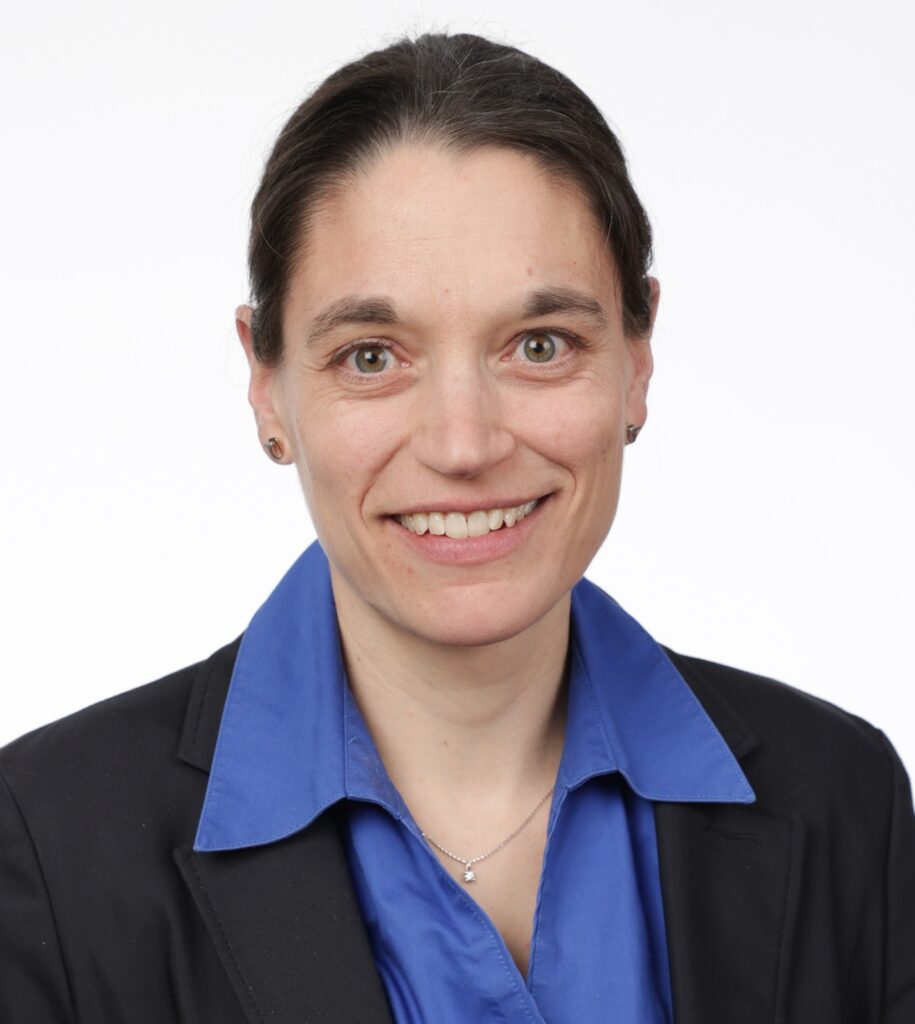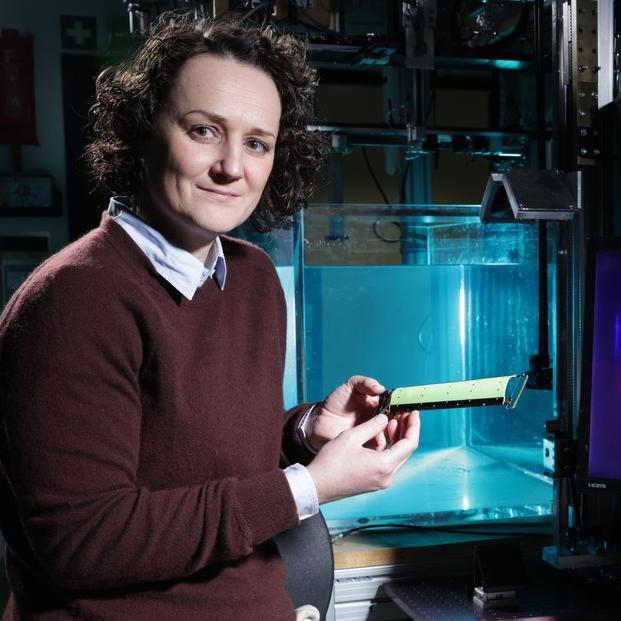Plenary & Key Note Talks
We are exited to announce out Plenary talks and Interdisciplinary Keynotes! These will be gradually announced in the run-up to the event!
Plenary Talks
Prof. Ellen Roche, MIT
Latham Family Career Development Professor;
Associate Department Head, MechE, MIT, USA.
Title: Soft robots to mimic or augment heart function
Abstract: My reseach is focused on device-enabled approaches to assist or augment the heart. Broadly, we look at improving structural repair, active assistance and delivery of biological therapy. This seminar will focus on representative implantable devices that we have worked on in each of these three areas, each addressing an identified shortcoming of existing technologies. I will also discuss high fidelity organosynthetic testbeds and computational models designed to validate and interrogate device performance before advancing to in vivo studies.

Bio: Ellen Roche is an Associate Professor at MIT’s, where she directs the Therapeutic Technology Design and Development Lab. She holds a PhD from Harvard University and has extensive experience in the medical device industry, working on embolic carotid filters, drug-eluting stents, and trans-aortic valve bioprosthesis delivery systems. Her research focuses on innovative cardiac device design, integrating soft robotics, mechanical actuation, biomaterials, and computational analysis to develop novel therapeutic strategies.
Prof. Barbara Mazzolai, IIT
Director of the Bioinspired Soft Robotics Laboratory
Title: Soft Robotics Meets Biodiversity: Nature-Inspired Paths to Innovation
Abstract: Biodiversity is the foundation of life on Earth, driving resilience, adaptability, and innovation across ecosystems. But can these same principles inspire the next generation of soft robots? In this talk, I will explore how biological diversity, both in movement and intelligence, provides a powerful model for designing advanced and sustainable robotic systems. Interdisciplinarity is key to achieving these breakthroughs. By integrating insights from biology, engineering, and computational science, we can develop robots that grow like plants, move by responding to environmental stimuli, and adapt through distributed intelligence, much like an octopus or a forest’s underground network. These bio-inspired technologies demonstrate how mimicking nature can lead to more efficient, adaptable, and environmentally beneficial robotics.
Finally, I will discuss why an interdisciplinary approach is essential, not only for developing robots inspired by nature, but also for ensuring they contribute to preserving it.

Bio: Barbara Mazzolai is the Associate Director for Robotics and the Director of the Bioinspired Soft Robotics Laboratory at the Istituto Italiano di Tecnologia (IIT) in Genoa. Her research focuses on bioinspired soft robotics, integrating principles from biology and engineering to drive technological innovation and expand scientific knowledge. She has coordinated several EU-funded projects in this field, including PLANTOID, GrowBot, and I-SEED. In May 2021, she began her European Research Council (ERC) Consolidator Grant, I-Wood, which explores forest intelligence through robotic networks inspired by the Wood Wide Web. She is the author or co-author of more than 260 papers published in international journals, books, and conference proceedings.
Interdisciplinary Keynotes
Prof. Esther Amstad, EPFL
Head of the Soft Materials Laboratory (SmAL)
Title: 3D printing of soft piezoresistive sensors
Abstract: Nature fabricates lightweight materials displaying fascinating combinations of mechanical properties and functionalities through benign, energy-efficient processes. These excellent properties are a result of an intricate interplay between structural control over the nm up to the mm length scales and locally varying compositions. We are far from reaching a structural and compositional control that can span a similar range of length scales. As a result of the inferior structural and compositional control, most manmade polymers possess mechanical properties and functionalities that are inferior to those of natural counterparts. These limitations restrict their use for example for soft robotic applications. In this talk, I will introduce granular polymers including responsive hydrogels and elastomers that can be 3D printed into load-bearing granular materials possessing locally varying mechanical properties such that they deform in a pre-defined manner. I will show how they can be functionalized to render them piezoresistive such that they can be used as stretchable humidity, temperature and pressure sensors. These sensors have the potential to render structures proprioseptic, a feature that might open up new opportunities in the design of closed-loop robotic systems.

Bio: Esther Amstad studied material science at ETH in Zurich where she also carried out her PhD thesis on the steric stabilization of iron oxide nanoparticles. She performed a Postdoc at Harvard University where she developed microfluidic devices for example to produce calibrated emulsion drops at high throughputs. In 2014, she joined the Ecole Polytechnique Fédérale de Lausanne (EPFL), Switzerland, as a Tenure Track Assistant Professor in the institute of Materials where she got promoted to an Associate Professor in 2021. She heads the Soft Materials Laboratory (SMAL) that introduces drop- and microparticle-based processes to fabricate functional load-bearing granular materials that can be used, for example, in soft robotics.
Prof. Yukie Nagai, The University of Tokyo
Project Professor at the International Research Center for Neurointelligence at the University of Tokyo
Title: How to Build Soft Minds?: Embodied Predictive Processing for Adaptive Intelligence
Abstract: Soft robotics is often characterized by flexible materials and compliant mechanisms, inspired by biological systems. However, what about computational softness? How can robots develop soft minds and adaptive intelligence? In this keynote, I will explore the concept of soft minds through the lens of embodied predictive processing — a framework I have been advocating as a unified theory of intelligence. Embodied predictive processing posits that the brain continuously integrates sensory signals from the body with predictive signals from internal models, aiming to minimize prediction errors. This process enables adaptive behavior by dynamically adjusting perceptions, actions, and models of the world. Our experiments with both robots and human children demonstrate that embodied predictive processing fosters the development of generalizable and adaptive intelligence. In contrast, disruptions in predictive processing can lead to atypical cognitive behaviors, offering insights into neurodivergent experiences. These findings underscore the critical role of predictive processing in linking brain function, body dynamics, and intelligent behavior across biological and artificial systems.

Bio: Yukie Nagai is a Project Professor at the International Research Center for Neurointelligence at the University of Tokyo. She earned her Ph.D. in Engineering from Osaka University in 2004, after which she worked at the National Institute of Information and Communications Technology, Bielefeld University, and then Osaka University. Since 2019, she has been leading the Cognitive Developmental Robotics Lab at the University of Tokyo. Her research encompasses cognitive developmental robotics, computational neuroscience, and assistive technologies for developmental disorders. Dr. Nagai employs computational methods to investigate the underlying neural mechanisms involved in social cognitive development. In acknowledgment of her work, she was elected to “World’s 50 Most Renowned Women in Robotics” in 2020,”35 Women in Robotics Engineering and Science” in 2022, and “Forbes JAPAN Women In Tech 30” in 2024, among other recognitions.
Prof. Karen Mulleners, EPFL
Head of the Unsteady flow diagnostics laboratory (UNFoLD)
Title: Reconfiguring it out: How flexible structures interact with fluid flows
Abstract: Nature is full of thin, flexible objects that bend, flutter, or flap in the wind or the water such as leaves of trees and bushes, insect wings, and fish fins. A remarkable feature that is common to these objects is their ability to deform when interacting with the air or the water in a way that benefits them. Leaves of trees bend in the wind to reduce their resistance and the loads on their stems. The flexibility of insect wings and fish fins can reduce the effort the animals need to stay aloft or to propel themselves and increases their performance and agility. In our lab, we design unsteady fluid-structure interaction experiments to study how flexible structures deform or reconfigure to change their fluid dynamic performance and resilience in dynamic flow environments. I will show examples of recent work on the investigation of the fluid-structure interactions of deformable flapping wings, reconfiguring disks, and flexible tails.

Bio: Karen Mulleners is an associate professor in the institute of mechanical engineering in the school of engineering at EPFL and the head of the unsteady flow diagnostics laboratory (UNFoLD). She received her PhD in mechanical engineering from the Leibniz Universität Hannover in Germany in 2010 for her work on dynamic stall on pitching airfoils that she conducted as a member of the German aerospace centre (DLR) in Göttingen. Her group is known for carefully designed and precisely controlled experiments of unsteady vortex dominated flows with applications in bio-inspired propulsion and wind energy. Their recent work has expanded to cover experimental fluid-structure interaction questions in collaboration with roboticists.
